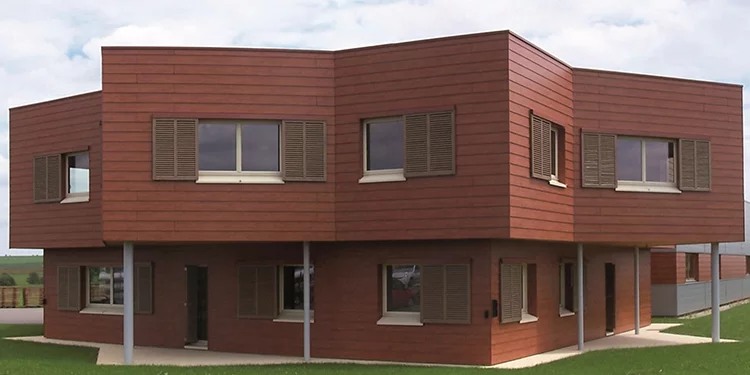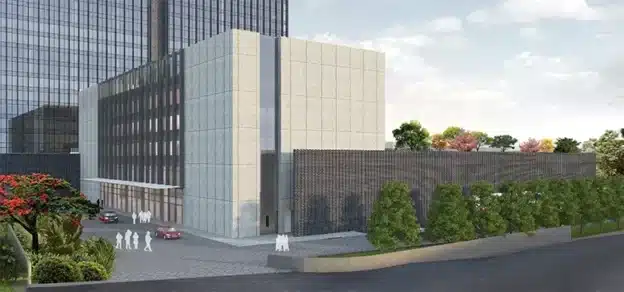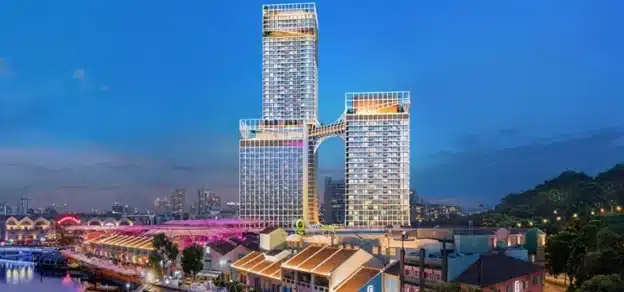Facade Cladding, while essentially being the skin of the building, should not merely accentuate the aesthetics but also serve as a shield from extremes of weather and the external environment. This protective layer, while being functional, should also permit the building to breathe while defining its significance and character. The Facade Cladding industry, today, is undergoing many changes in terms of functionality and performance parameters. To create an optimal artificial environment inside the building, the cladding material has to ensure a reduction in energy consumption through the wall of the building. This also means that the cladding material and system have to perform in all types of climatic conditions giving rise to more robust, energy-efficient, innovative and adaptable façade systems some of which are explained below:
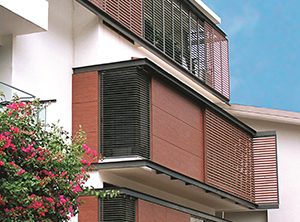
Rain Screen Façade Cladding (Back Ventilated Façade System):
Rear-ventilated facades are amongst the most popular facade systems today. In addition to their functional safety, architects chiefly value the design possibilities provided by the use of rear-ventilated facades. The design can be individually harmonised with the characteristics of the building. Material combinations of various cladding materials can also be easily implemented. Other technological advantages of rear-ventilated facade systems include the structural division of insulation and weather protection materials. These systems are thus less susceptible to damage than other facade systems. In addition, fire, noise and lightning protection requirements can be implemented easily and creatively.
Advantages of rain screen facades:
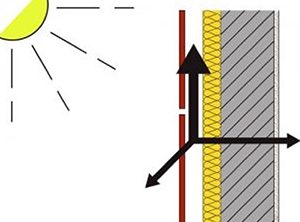
- Due to the structural separation of facade cladding and thermal insulation, ventilated rain screen facades provide lasting protection against condensation of water and rain.
- In terms of building physics, the ventilated rain screen facades are a tried-and-tested type of construction for ensuring a pleasing indoor climate.
- Ventilated rain screen facades result in a considerable reduction in energy costs for heating and air-conditioning.
- Ventilated rain screen facades are extremely robust, have a long useful life, require no maintenance and, in economic terms, are an extremely advantageous solution for increasing the value of a building.
Double Skin Façade Cladding System:
The Double-skin facade is a system of buildings consisting of two skins placed in such a way that air flows in the intermediate cavity. The ventilation of the cavity can be natural, fan supported or mechanical. Apart from the type of ventilation inside the cavity, the origin and destination of the air can differ depending mostly on climatic conditions and the use and the location of the building and the HVAC strategy.
The cavity between the two skins may be either naturally or mechanically ventilated. In cold climates, the solar gain within the cavity may be circulated to the occupied space to offset heating requirements, while in hot climates the cavity may be vented out of the building to mitigate solar gain and decrease the cooling load. In each case, the assumption is that a higher insulation value may be achieved by using this glazing configuration over a conventional glazing configuration. Recent studies showed that the energy performance of a building connected to a double-skin facade can be improved both in the cold and the warm seasons and in cold and warm climates by optimizing the ventilation strategy of the façade.
Louvers / Sun Blinds Façade Systems:
Solar shading louver systems are one of the most effective ways to reduce air conditioning loads while offering designers the opportunity for distinctive architectural impact. Radiation from the sun is transmitted, absorbed and reflected by the louvers. As a result, solar heat gain is prevented from passing into the building. If an operable system is chosen, the adjustable louvers will track the position of the sun increasing the system shading effectiveness and further reducing glare. On overcast days, the operable louvers can be opened to maximize the natural daylight in the building. For predominately north-facing façades in all but the lowest latitudes the façade will not receive direct sunlight and solar shading is not required or beneficial from an energy perspective. Shading louvers may be used for an aesthetic look complementary with the other south, east and west facing façades.For a predominately South facing façade,a small amount of solar shading can be achieved using a fixed horizontal sunshade.
In winter such a device, however, cannot stop direct rays from the sun penetrating the building’s windows since the sun is at a lower height. While passive solar heating at times is beneficial, the cooling loads on many southern-facing zones peak in the late fall/early winter due to solar radiation. With a predominately East or West facing façade, a fixed system will not perform well as the altitude of the sun varies throughout the day.
Effective solar shading on the South, East and West façades can be achieved only by using an operable shading louver system. The angle of the louvers is adjusted throughout the day to provide optimal shading.

Energy efficient Façade cladding system:
In practice, nearly every external building element today has to comply with thermal standards that are expressed as a maximum U value (overall heat transfer coefficient).
Knowledge of how to simply calculate U values at an early stage in the design process avoids expensive re-working later on in a project. It allows the designer to test the feasibility of their project at an early stage to ensure it is fit for purpose and will comply with regulatory frameworks.
Optimal U Value ensures excellent thermal performance, low thermal bridging and airtightness and helps reduce energy and heating costs. With a high thermal performance envelope comes the associated responsibility to account for overheating, air quality, ventilation and so on. Such walls will set any home on a path towards very low operational energy and, potentially, towards being very sustainable, so long as designers, constructors and owners put the remaining pieces in place and provide the holistic thinking to complete the job.
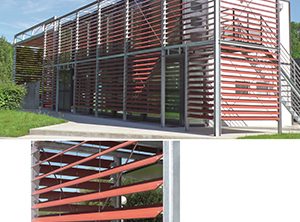
Adaptable façade cladding system:
A System of Installation that is compatible with any type of other façade and blends seemly in the technical necessity of glazing is called an Adaptable facade.
Conclusion
The core functional idea of façades is to work with nature rather than to try and resist its influences. Today’s architects not only have to take into consideration technical aspects when designing a façade but also must look at the design aspects which give a superior aesthetic appeal and uniqueness in design and at the same time be energy efficient. Technological innovations today have enabled architects and designers to express their inclinations and ideologies indistinctive and individual manners, far more easily than ever before, and this seems to be the trend in the near foreseeable future.
